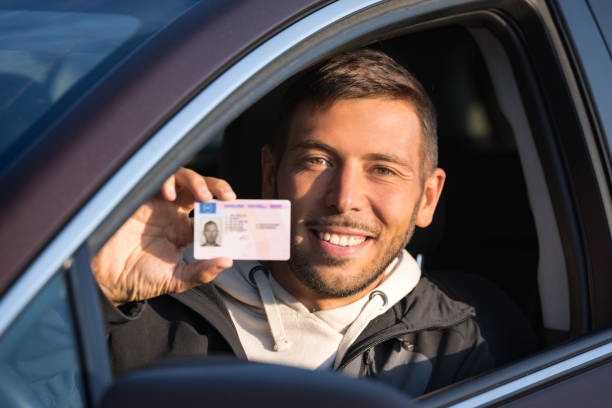Blog
A Comprehensive Guide to Obtaining Your US Driving License
A Comprehensive Guide to Obtaining Your US Driving License
A Comprehensive Guide to Obtaining Your US Driving License. Obtaining a US driving license is one of the most important steps toward personal freedom and mobility in the United States. Whether you are a resident, a new immigrant, or an international student, having a valid driver’s license allows you to legally operate a vehicle, travel independently, and use it as an official form of identification. This guide provides a comprehensive overview of the requirements, process, and tips for obtaining your US driving license efficiently.

Why You Need a US Driving License
A US driver’s license serves multiple purposes beyond simply driving a car. It is accepted nationwide as a primary identification document for financial transactions, renting apartments, boarding domestic flights, or even voting in some states.
Having your own license also offers several benefits:
-
Independence and flexibility to travel without relying on public transport.
-
Access to job opportunities requiring valid identification or driving skills.
-
Eligibility for car insurance and vehicle ownership.
-
Recognition as a verified resident of your state.
Whether you are applying for the first time or transferring an international license, the process is straightforward once you understand the state-specific guidelines.
1: Determine Eligibility
Before applying, make sure you meet the basic eligibility requirements:
-
Age – Most states allow learners to apply at 15–16 years old and full licenses at 18.
-
Residency – You must provide proof of your address in the state where you apply.
-
Legal presence – You need valid documentation proving your lawful status in the US (passport, visa, or green card).
-
Social Security Number (SSN) – In most states, you must provide your SSN or proof of ineligibility if you don’t have one.
Eligibility rules can vary, so always check your state’s Department of Motor Vehicles (DMV) or equivalent agency for specific details.
2: Prepare the Required Documents
Gathering the correct documents is crucial for a smooth application. Most DMVs will require:
-
Proof of identity (passport, birth certificate, or permanent resident card)
-
Proof of US residency (utility bill, lease agreement, or bank statement)
-
Proof of Social Security Number
-
Proof of legal presence (visa, employment authorization, or immigration documents)
Having original or certified copies ensures no delays in processing your application.
3: Apply for a Learner’s Permit
If you are a first-time applicant, you will need to start with a learner’s permit before obtaining a full license. Here’s what to expect:
-
Written Knowledge Test – Covers road signs, driving laws, and safe practices.
-
Vision Test – Ensures you meet the minimum eyesight requirements.
-
Application Fee – Fees vary by state, typically between $10 and $50.
Once you pass, you’ll receive your learner’s permit, allowing you to practice driving under supervision.
4: Enroll in a Driver’s Education Program (If Required)
Many states mandate driver’s education courses for new or young drivers. These programs teach essential driving skills and safety laws. They include:
-
Classroom instruction (traffic rules, signs, and laws)
-
Behind-the-wheel training with a certified instructor
Completing this course can also reduce your insurance costs and help you feel more confident on the road.
5: Practice Driving
With your learner’s permit, you must log a required number of supervised driving hours before taking the road test. Most states require anywhere between 30–60 hours, including both daytime and nighttime driving.
During practice:
-
Drive in different weather and traffic conditions.
-
Learn parking, merging, and highway driving.
-
Focus on defensive driving and hazard awareness.
This stage is critical for building real-world experience and confidence.
6: Take the Road Test
Once you have gained enough experience, you can schedule your driving skills test. The road test evaluates your ability to:
-
Follow traffic rules
-
Park correctly (parallel, uphill, and downhill)
-
Maintain lane discipline
-
Make safe turns and stops
Bring all necessary documents, your learner’s permit, and a properly insured vehicle for the test. Passing this exam means you are ready to receive your official US driving license.
7: Pay the Licensing Fee and Receive Your License
After successfully passing your road test, you’ll pay a final licensing fee, which varies by state (usually $25–$60). The DMV will issue a temporary paper license immediately, while your permanent card arrives by mail within 2–4 weeks.
Your new US driving license is now valid for driving anywhere in the country. Most licenses remain valid for 5–8 years, depending on your state’s regulations.
8: Learn About Renewal and Updates
Keeping your driver’s license valid is essential. Always remember to:
-
Renew before expiration (usually online or by mail)
-
Update your address if you move
-
Report lost or stolen licenses immediately to your DMV
Failure to maintain an active license could lead to penalties or suspension.
Tips for a Smooth Application Process
-
Study your state’s driver handbook thoroughly before taking the written test.
-
Schedule DMV appointments early, as wait times can be long.
-
Double-check your documents to avoid application rejection.
-
Stay calm during the road test—practice makes perfect.
-
Consider online DMV services for renewals or status checks.
These steps ensure a hassle-free experience and help you get your license faster.
Common FAQs
1. Can international students or tourists apply for a US driving license?
Yes, but requirements differ by state. Some states accept an International Driving Permit (IDP) for a limited period before you must obtain a local license.
2. How long does it take to get a driving license in the US?
The timeline depends on your state and readiness, but typically ranges from 4 weeks to 6 months depending on testing schedules and practice requirements.
3. Can I use my foreign driver’s license in the US?
You can use it temporarily, but long-term residents must apply for a state-issued driver’s license.
Conclusion
Obtaining a US driving license is a major milestone that opens the door to independence and countless opportunities. By understanding your state’s DMV process, preparing your documents, and practicing safe driving habits, you can secure your license with ease and confidence.
Whether you’re a new resident or a first-time driver, this comprehensive guide ensures you’re well-prepared to navigate the road ahead—safely, legally, and successfully.

